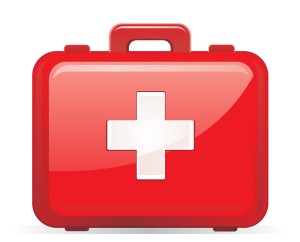8 Tips To Spring Clean Your First Aid Kit
Accidents happen. After a long winter season, spring is a time for renewal and cleaning up the home. It’s also a time when accidents in the home sharply rise as hands, arms and legs – dried out from the long winter months – meet the edges associated with whipping a backyard into shape, remodeling a room or even cleaning the cupboards.
 Before the next accident occurs, it’s time to “spring clean your first aid kit” with the following ideas:
Before the next accident occurs, it’s time to “spring clean your first aid kit” with the following ideas:
• Consider adding a product used in the hospital that stops bleeding cuts in seconds – such as WoundSeal. Unlike bandages and gauze that only cover a wound after bleeding stops, this topical powder is a hemostatic agent that stops bleeding wounds, skin tears and lacerations through the creation of an instant, protective scab.
• Look at all over the counter drug products and throw away those with old expiration dates.
• Place the first aid kit in an area that anyone can reach – and easily get to – in a time of need.
• Make sure the entire family knows where the kit is located.
• Show the family what’s in the first aid kit and tell them how to use each item on a specific injury.
Other safety items to consider – Per the National Safety Council:
Smoke alarms save lives – if they are powered by a fresh battery. You should test them every month to make sure they work and replace the battery at least once a year, according to the National Fire Protection Association. If the alarm makes a “chirping” sound, replace it immediately.
Carbon monoxide (CO) is an invisible, odorless gas, and it can kill you. Anything in the home that burns fuel can potentially become a source of carbon monoxide. CO alarms should be installed in a central location outside each bedroom and on every level of the home. The safety tips for CO detectors mirror those of smoke alarms: change the batteries, test them and interconnect them, if possible. Also, make sure vents for your gas appliances (fireplace, dryer, stove and furnace) are free and clear of snow or debris.
Have an family emergency plan in place in the event of a natural disaster or other catastrophic event. Spring is a great time to review that plan with family members to make sure they know what to do.

